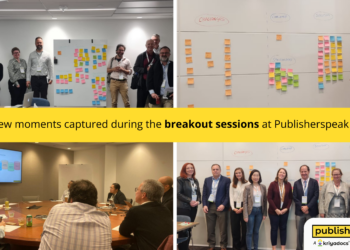
- Fractal. Image via Wikipedia
It’s official — the embattled editor-in-chief of the math journal, Chaos, Solitons and Fractals, is out. A new editor has not been announced, yet the number of accepted manuscripts waiting for publication has grown to nearly one-thousand, according to the journal’s website.
A controversy in the mathematical physics community erupted late last year over the practice of the controversial editor-in-chief, Mohamed El Naschie’s practice of publishing his own articles. While this practice was not new, it came to a head last December, with 5 of his papers appearing in the same issue. El Naschie is the founding editor of Chaos, Solitons and Fractals, which began publishing in 1991. His practice of self-publishing began in 1998.
Because of the backlog in accepted manuscripts, the publisher has asked for a “temporary submission stop” so as not to exacerbate the publication delay for authors. As of February 5, 2007, there were 942 articles in press. All of these articles are corrected proofs, meaning they merely lack an issue and page number. All have been formatted in fulltext and PDF, have been registered with a DOI and contain a full citation (albeit one that says “in press”).
So why the wait for the new editor-in-chief to “publish” them?
In a strict sense, these articles have been published. They merely lack the formality of an issue and page number designation. This sounds strangely anachronistic in an age of digital publishing.
Scientific publishing is a gift-economy, with authors exchanging manuscripts for peer-recognition. The exclusivity of a journal, the prestige of the editorial board, and its editor-in-chief, all play a role in rewarding the author for his or her gift. No one wants to associate their work with a controversy, especially a controversy that questions the integrity of the peer-review process. The fact that an article was originally accepted nearly two years ago under the old editor is important, but may be missed in the general Zeitgeist of a journal.
Waiting for the blessing of the editor-in-chief before an article is formally published may be ceremonial in nature, but ceremony is at the core of scientific rewards.
Discussion
6 Thoughts on "Chaos Continues in Math Journal"
It’s official — the embattled editor-in-chief of the math journal, Chaos, Solitons and Fractals, is out.
Where did you get this news? As of today, the website for the journal still says “the Founding Editor for Chaos, Solitons and Fractals Dr El Naschie will retire as Editor-in-Chief.” It’s said this since late December, but there have been reports saying that El Naschie does not intend to step down, and is threatening to sue the publisher (Elsevier) to maintain control of his journal.
Where is the list of 942 accepted articles? How many are by El Naschie, or other people working on “E-infinity theory”?
Go to the following page on Science Direct
http://www.sciencedirect.com/science/journal/09600779/
and click on “Articles in Press” located at the top of the left column. As of today (Feb 10), there are 943 articles in press.
I can’t comment on the legal hearsay. The journal description page says that the publisher is seeking a new editor.
The note about the “temporary submission stop” has been removed.
Elsevier has made the worst possible decision by starting to publishing the backlog of papers which were accepted during the provable badly (or no) peer reviewed age of El Naschie and the rest of complying board. Before Elsevier could claim, well this is the editor’s resposibility, we BELIEVED that the peer reviewing practicies were maintained at hi level. Now they DO know of the problem, and they issues January 15 issue of chaossf with papers accepted by El Naschie’s board, without reexamining them for quality. This is MANIFEST ACCEPTANCE by Elsevier of LOW QUALITY STANDARDS. You know that the papers were accepted in a process doubted by majority of public scientific community, you are reviewing the future of the process but you are happy with taking over 900 papers from that old pool to print! It is unbelieable a major company, not to say world-class SCIENTIFIC publisher would ever dare to be so irresponsible!
Moreover, the number of papers accepted by around New Year was about 900, it has grown since by at least around 40 new articles. That means that the old board is still acting and that Elsevier is doing this. Instead Elsevier bans on new submissions what is an unheard practice for a journal in existance!
One should either cancel the journal or do a Hercules job of make it a quality journal. Though I do not believe the latter were easy. the rest of the board was complient to bad peer reviewing practices. Some of the members of the board confirmed in letters to me that their names were there without their prior consent. Most of others did not respond to my emails if they agreed or not with the current editorial practices as of June 2008. Now who would like to take a role of an editor in the board with such a history. The whole board needs to be replaced at minimum. But I think the chances to regain the value after being so reluctant and defending the undefendable, and prolonging the agony by publishing the badly reviewing papers, is close to zero. I received letters from many members of scientific community and the opinion in general is that chaossf has practically no chance to survive, all the damage the bad past and current practices of the board
and reluctance of Elsevier to act have done.
Zoran Skoda
![Reblog this post [with Zemanta]](http://img.zemanta.com/reblog_e.png?x-id=45c12737-a2bf-489e-9a56-25f6bb0c8dad)


